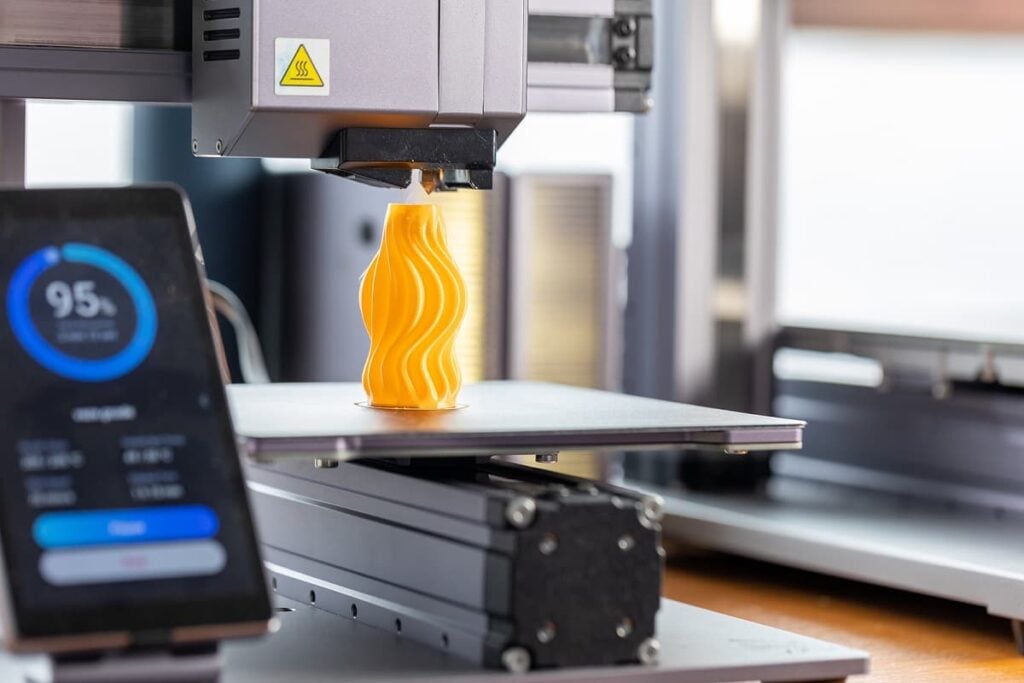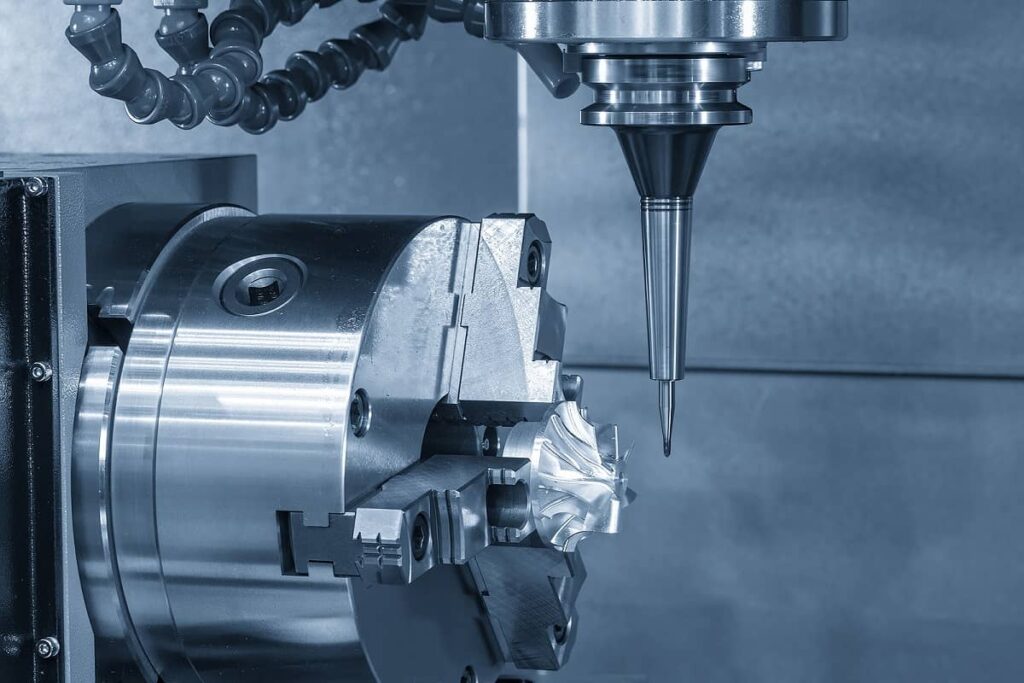Xometry Stock – An On-Demand Manufacturing Marketplace
Table of contents

Anyone who decides to spend a few bricks on bee school will quickly become acquainted with the Harvard Business School (HBS) Case Method. It starts with a “case study,” a 10-20 page document written from the viewpoint of a real person leading a real organization. The aspiring leaders of tomorrow then use Google to try and find the answer before realizing there is no “right answer.” The outcome is eventually presented to the students so they can learn about the process of complex decision making.
The case study approach comes in handy for investors as well when trying to determine which business models will become superior. Today, we’re going to talk about two business models for on-demand manufacturing (also called distributed manufacturing).
On-Demand Manufacturing
We’ve written before about The “On-Demand Manufacturing” Business Model which promises to transform the $12.7 trillion global manufacturing market. Simply put, the idea is to provide a platform that allows anyone to:
- Upload a design file, choose a material, specify quantity
- Get price quote(s) immediately
- Order the part and have it shipped straight to your door
In last year’s piece on Six Manufacturing-as-a-Service Companies, we looked at various business models emerging from providers of on-demand manufacturing platforms. One of these was a company called Xometry.
About Xometry Stock
Founded in 2013, Washington DC’s own Xometry has taken in around $197 million in disclosed funding from investors that include Dell, BMW, Bosch, and T. Rowe Price. That money was used to build an online marketplace that allows customers to access a network of machine shops and custom manufacturers. (This differs from the Protolabs (PRLB) approach which involves buying their own equipment and doing the manufacturing in-house.) Like Protolabs, Xometry offers a suite of manufacturing processes such as 3D printing, CNC machining, and injection molding.

Xometry talks up their use of artificial intelligence (AI), particularly their “AI-enabled instant quoting engine based on volume, manufacturing process and material.” Those algorithms serve up price quotes to 24,160 active buyers using the Xometry marketplace, and then 1,410 active sellers complete the work. Xometry generates substantially all their revenue from the prices they charge buyers on their platform, though there’s an emphasis on providing value-add services to sellers such as supplies and financing.

In 2020, 40% of active Xometry sellers purchased supplies or utilized one of their financial services, though the resulting revenue was dismal – only around 5% of total revenues.
As for buyers, 95% of 2020 revenue came from existing accounts, and from within the United States, with one significant account, ClearMask, accounting for approximately 11% of total revenues. Xometry’s key operational metrics show a growing number of active buyers along with increasing spend over time.

One of the risks Xometry points out is that “buyers or sellers can stop transacting on our marketplace at any time.” They need to continue adding value for marketplace participants or there’s no reason for them to stick around. Buyers and sellers can feel free to engage in transactions at any time by simply circumventing the Xometry platform. Perhaps why we’re provided the “percentage of revenue from existing accounts” metric which shows that the platform isn’t just a matchmaking service.
An Xometry Case Study
If this were an HBS case study, we would now be asked a question like “how can Xometry better compete against Protolabs given what we know?” To answer that question, we’ll do what we did in b-school – take a bong rip and spend 30 minutes covering a whiteboard with buzzwords and arrows. Here’s what we came up with.
In the U.S. alone, there over 625,000 manufacturing businesses, 98% of which are categorized as small businesses. Xometry has 1,410 active sellers, “active” meaning sellers that have used their platform at least once during the last 12 months to manufacture a product or buy tools or supplies. That means about 28% of sellers that ever used Xometry’s platform are actively using it today. It also means they’ve penetrated around 0.02% of the total addressable market (TAM) when it comes to sellers. Such a low number must mean they’re entirely constrained by the demand side. A creative way to increase demand may be to target sellers – many of them.
Since 98% of manufacturing companies are small businesses, they probably don’t have the resources to invest in technology. It makes sense for Xometry to offer sellers a free value-add service, then slowly bring both the seller and their customers – the supply and the demand – into the fold. If there’s a software solution already out there that’s used by a good chunk of small manufacturing businesses, acquire it. If not, build a piece of software that small manufacturing businesses would find indispensable. And don’t take the “build it and they will come” approach. Find some interns that can query a sample of small manufacturing businesses, figure out their pain points, and then address them with technology.
If you’re interested in hiring our MBAs to help execute this strategy, we’ll gladly charge you $250 an hour while John-in-Mumbai does the heavy lifting for $50 an hour. It’s a whole lot less than what a big-five consulting firm would charge to do the very same thing.
Protolabs vs. Xometry
Whenever we look at a prospective investment, we do so in the context of what we’re already holding. Nanalyze Premium subscribers know we’ve been slowly adding to our Protolabs position as their share price languishes. A few months ago, we wrote about Why We’re Long Protolabs Stock But Not Shapeways Stock, mainly because Protolabs already has the business model that Shapeways wants to have. When comparing Xometry to Protolabs, we see two major differences between these two business models.
Quality
By manufacturing everything in-house, Protolabs can control quality. They have a closed-loop platform which generates loads of big data that they can use to optimize their operation. When Xometry outsources their jobs, they lose the big data picture and take on the liability of assuring quality. In fact, Xometry agrees to pricing with a buyer in advance of sourcing the opportunity to a seller. Sure, AI algorithms help make this happen, but it’s risky.
Capital Expenditures
Xometry’s “capital light” business model means they can run a lot leaner and require less capital since they don’t need to buy equipment. We question how much of an advantage that is when you consider that today’s equipment manufacturers are likely to offer their machines on a “pay as you go” basis in which the purchaser only pays for the time spent utilizing the equipment. The value of having a closed-loop platform seems to outweigh the benefits of operating a capital-light business.
Size and Valuation
Xometry hasn’t priced their shares yet, so we don’t know how their valuation stacks up to Protolabs. Since we know revenues for both companies, we can make some assumptions using our simple valuation ratio. Here’s how Protolabs is valued:
- $2.35 billion / 0.464 billion = 5
If Xometry had a valuation ratio of 5, their market cap would be around $875 million (their last valuation was $568 million in September 2020). However, Xometry is growing revenues a whole lot faster than Protolabs.

Consequently, we can expect Xometry to offer shares at a richer valuation than Protolabs. When shares eventually begin trading, they’ll likely trade at a completely different price. That’s why prospective investors should wait for the dust to settle prior to going long. As for us, we’re content with our investment in Protolabs, but really want to see their growth resume or Xometry’s growth is going to be looking a lot more attractive.
Conclusion
If this were a case study and we needed to choose the most economically viable business model, we’d go with Protolabs because we believe that being vertically integrated will ultimately lead to better quality and lower pricing, two attributes that customers will gravitate towards in the long run. Still, we’ll be keeping a close eye on Xometry going forward.
Should the IPO go through as planned, shares of Xometry will trade under the ticker XMTR.
Sign up to our newsletter to get more of our great research delivered straight to your inbox!
Nanalyze Weekly includes useful insights written by our team of underpaid MBAs, research on new disruptive technology stocks flying under the radar, and summaries of our recent research. Always 100% free.
















You champion Protolabs’ vertical integration and “manufacturing everything-in-house” over Xometry’s asset-light approach assuming that this will lead to better quality and lower prices. I am convinced that the opposite is true and that the power of a network is much stronger.
Operating a curated platform that allows for working with first-class suppliers while making use of their respective core competencies and different cost structures will ultimately lead to better results in terms of pricing and quality than manufacturing everything-in-house. Isn’t this the reason why Protolabs acquired 3D Hubs?
However, Xometry has a large supplier base of 1,410 sellers which indeed raises the question if they have a quality focus here and if they take curation seriously.
Cheers for the comment Adrian! It is perfectly acceptable to think that either business model will come out ahead. What a case study makes you do is pick a side! We can all see the pros and cons of each side, but we still need to pick one with conviction. That’s all we’ve done here with Protolabs. We’ve simply asked, “is this new company that competes with Protolabs a better way to play on-demand manufacturing than the company we’re currently holding?” If the answer is no, no action needed. We’ll be keeping an eye on both companies. Thank you for taking the time to provide an alternating viewpoint.
Adrian, I tend to fall in your school of thought as well.
Utilizing existing surplus capacity should be an indicator for a continued trend toward lower cost of goods. A machine shop that has a job dropped in their lap are much more likely to take a lower price considering the absence of traditional overhead. They don’t dictate the price – Xometry doesn’t either – the market does and Xometry uses a formula to set a price that makes sense for both parties (buyer and seller)
The biggest constraint of Protolabs is their inability to be flexible with parts that fall outside of their ‘box’. Definitely have a better grasp on quality since it is all in-house. I do wonder what kind of cap that puts on their growth outside of continuing to acquire other companies.
However, this is manufacturing, and without quality you don’t can’t have continued success. Their supplier on-boarding helps eliminate suppliers that would ultimately produce poor quality. While it is not perfect, they actively score their suppliers which, considering the public information on who use them, they seem to have a handle on.
I am only a retail investor but I do focus a lot of my efforts. My OPINION is this is a better buy then Protolabs, albeit maybe not immediately.
But, like the author stated, case studies allow you to formulate your own opinion. Great article, fun read and easy to digest. Thank you!
@ Robert Hall Parber, Jr.
Great comment! Quality insights with an explanation behind how you arrived at the conclusion. Glad you enjoyed the piece and especially that it got us all thinking a bit about the what-ifs.
Speaking of utilizing existing surplus capacity, we recently wrote about a firm called MachineMetrics (https://nanalyze.com/2021/06/machinemetrics-iot-industrial-manufacturing/) which increases capacity at machine shops by 15 to 20% in weeks using an IoT solution that focuses on data capture. We were thinking that Xometry ought to be all over that. They could offer this tool to their manufacturers to improve quality and even use it to find new sellers/buyers and add them to their larger ecosystem. Or maybe we’re taking that whole case study thing a bit too far 🙂